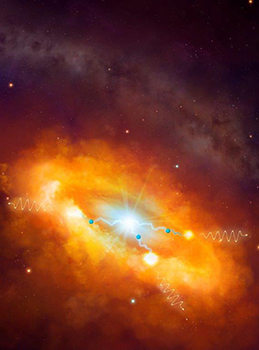Latest News Archive
Please select Category, Year, and then Month to display items
12 June 2024
|
Story Lunga Luthuli
|
Photo supplied
![]()
Richard Molefe, a final-year BCom Investment Management and Banking
student at the University of the Free State (UFS), was recently elected uncontested as the National Chairperson of the Black Management Forum (BMF) National Student Chapter. The BMF aims to empower managerial leadership among black individuals in South Africa. Molefe's election signifies a step towards inclusive leadership structures that reflect wider societal values.
In an exclusive interview, Molefe shares his vision for youth empowerment and his plans for the Student Chapter's endeavours.
“The Black Management Forum’s programmes of development and advancement of managerial leadership and socio-economic transformation have exposed me to leadership opportunities that enhance my potential and aspirations. The opportunity is an indication that I have done something right, but I must constantly remind myself that I have not arrived,” said Molefe.
In his one-year term of office, Molefe wants to ensure that national structures of the Student Chapter exist and are functional, key pillars – promoting leadership, managerial leadership development skills, and entrepreneurial skills development in higher education institutions.
Two scientists part of team that discovers the source of the highest energy cosmic rays at the centre of the Milky Way
2016-03-22

Artist's impression of the giant molecular clouds surrounding the Galactic Centre, bombarded by very high energy protons accelerated in the vicinity of the central black hole and subsequently shining in gamma rays.
Artist's impression: © Dr Mark A. Garlick/ H.E.S.S. Collaboration Spotlight photo:
Dr Brian van Soelen and Prof Pieter Meintjes of the UFS Department of Physics.
Photo: Charl Devenish
|
H.E.S.S. (High Energy Stereoscopic System) scientists publically revealed their latest galactic discovery in the international science journal, Nature, on 16 March 2016. These scientists were able to pinpoint the most powerful source of cosmic radiation – which, up to now, remained a mystery.
Part of this team of scientists are Prof Pieter Meintjes and Dr Brian van Soelen, both in the University of the Free State (UFS) Department of Physics. Dr Van Soelen explains that they have discovered a proton PeVatron – a source that can accelerate protons up to energies of ~1 PeV (10^15 eV) – at the centre of the Milky Way. The supermassive black hole called Sagittarius A has been identified as the most plausible source of this unprecedented acceleration of protons.
The protons are accelerated to Very High Energy (VHE) gamma rays. The energy of these protons are 100 times larger than those achieved by the Large Hadron Collider at CERN (the European Organization for Nuclear Research).
According to Dr Van Soelen, the fact that this research has been published in Nature demonstrates the importance and pioneering nature of the research conducted by H.E.S.S. The H.E.S.S. observatory – operational in Namibia – is a collaboration between 42 scientific institutions in 12 countries.
In 2006, H.E.S.S. was awarded the Descartes Prize of the European Commission – the highest recognition for collaborative research – and in 2010 the prestigious Rossi Prize of the American Astronomical Society. The extent of the observatory’s significance places it among the ranks of the Hubble Space Telescope and the telescopes of the European Southern Observatory in Chile.
“The next generation VHE gamma-ray telescope,” Dr Van Soelen says, “will be the Cherenkov Telescope Array (CTA), which is currently in the design and development stage.” Both Dr Van Soelen and Prof Meintjes are part of this project as well.
H.E.S.S. has issued a complete statement about the paper published in Nature.